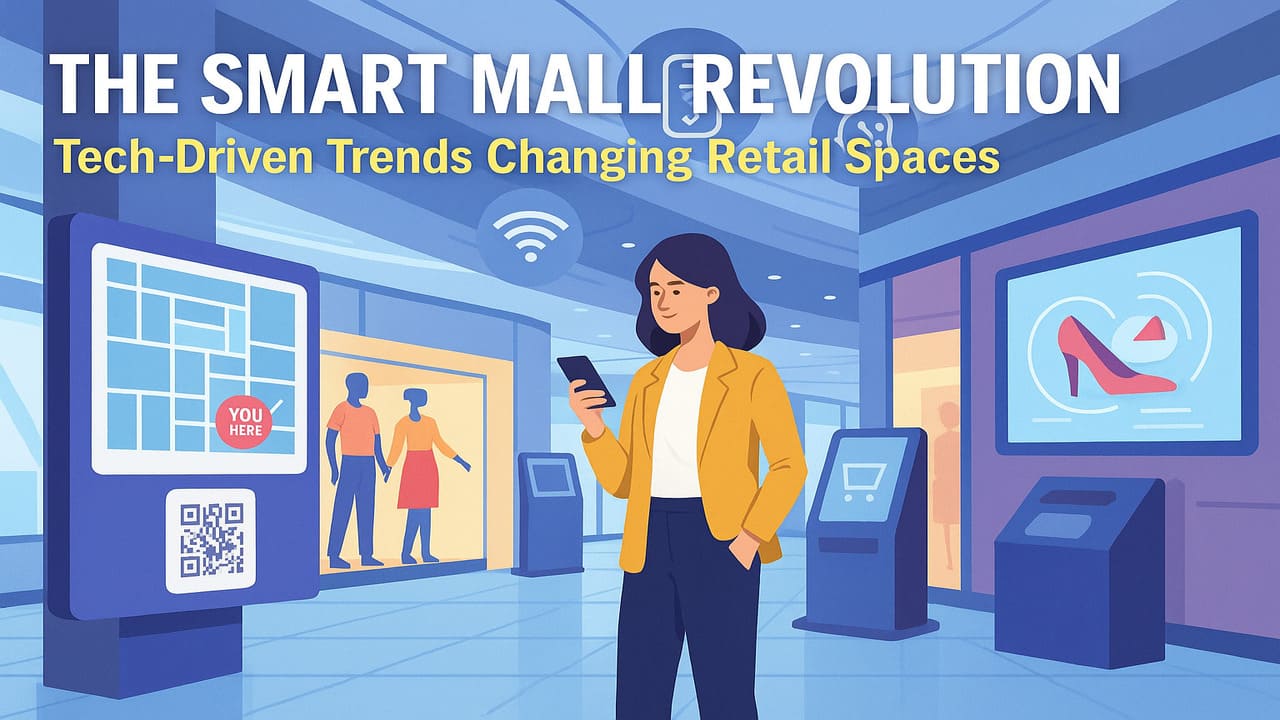
The Berkshire Mall – The image of a traditional mall rows of shops, bustling food courts, escalators filled with shoppers is rapidly evolving. In 2025, malls are no longer just places to buy products they have become interactive, tech-enabled ecosystems. Designed to deliver seamless, engaging, and personalized experiences. This shift is known as the Smart Mall Revolution a transformation that fuses digital innovation with physical retail infrastructure.
At the heart of this revolution is the desire to make shopping more efficient, convenient, and immersive. Customers expect more than just transactions they want experiences. In response, mall developers and retailers are embracing cutting-edge technologies to enhance customer satisfaction. Streamline operations, and stay ahead in an increasingly competitive retail environment.
A key driver of smart mall innovation is the integration of digital infrastructure throughout shopping centers. From high-speed public Wi-Fi to beacon-based navigation systems, smart malls aim to ensure that every step a shopper takes is connected and informed.
Many malls now feature interactive directories with AI-powered wayfinding, allowing visitors to find stores, restrooms, or exits using real-time maps. These systems often link with mobile apps, offering route suggestions, queue updates, and even alternate paths to avoid crowded areas.
In addition, 5G networks and IoT (Internet of Things) sensors enable real-time data collection on shopper behavior. These insights are used to optimize air conditioning, lighting, and even security, creating a smarter, more responsive environment that adapts to changing visitor needs.
Cashless transactions are no longer a novelty they’re a standard. Smart malls across the globe are integrating QR code payments, contactless card terminals, and mobile wallets at nearly every point of sale. Some even allow for biometric payments using facial recognition or fingerprint scanning, reducing transaction time to mere seconds.
This transition supports a broader trend toward frictionless experiences. Automated checkout systems in food courts and kiosks reduce wait times, while some stores have adopted Amazon-style “grab-and-go” technology. Where items are automatically billed to a customer’s account as they leave the store.
In addition, digital receipts and loyalty points are instantly delivered via apps, offering not just convenience but also eco-friendliness by reducing paper waste.
One of the most transformative elements of the smart mall revolution is the use of artificial intelligence (AI) to personalize the shopping experience. Through apps and in-mall kiosks, AI can analyze past shopping behavior, preferences, and even moods to recommend stores, products, or dining options.
Imagine walking into a mall where interactive displays greet you by name. Suggest deals based on your previous visits, and offer a discount if you visit a specific store today. This level of personalization is now possible through data integration between stores, loyalty programs, and mall management platforms.
Even fitting rooms are getting a tech upgrade some malls feature smart mirrors that let customers try on clothes virtually. Change colors or sizes with a gesture, and even get real-time recommendations for matching accessories.
Read More : Top Shopping Malls to Visit in 2025: Where Retail Innovation Meets Entertainment
Finding a parking spot is often one of the most frustrating aspects of visiting a mall. Smart malls are solving this problem through AI-powered parking systems that guide drivers to available spaces. Enable license plate recognition for automatic entry and exit, and allow spot reservation via mobile apps.
Inside the mall, foot traffic sensors and heat maps help managers understand movement patterns, identify bottlenecks, and improve layout efficiency. These insights also assist in crowd control, especially during peak seasons or special events, ensuring a smoother experience for everyone.
To stay relevant in the age of e-commerce, malls are offering something online platforms cannot immersive entertainment experiences. Smart malls now incorporate AR (augmented reality) and VR (virtual reality) zones where customers can play interactive games, tour virtual showrooms, or participate in brand activations.
For instance, a fashion brand might set up a VR catwalk, allowing customers to experience a fashion show while trying on the collection virtually. Family entertainment centers are also going high-tech, with projection mapping, holograms, and interactive walls becoming popular attractions.
These innovations help transform a visit to the mall into a multisensory outing, merging retail, technology, and entertainment under one roof.
Instead of ending with a typical conclusion, let’s highlight a key but sometimes overlooked aspect of the smart mall movement: sustainability.
Modern Smart Mall Revolution are design not just to be convenient and innovative, but also eco-conscious. Many are build or retrofitt with green building materials, solar panels, and energy-efficient HVAC systems that reduce environmental impact.
Smart lighting systems use motion sensors to conserve electricity. While water-saving plumbing and green roofs help lower utility costs and support local ecosystems. Some malls also integrate waste management systems that sort and process recyclables on-site.
Sustainability is also present in the digital space replacing paper directories with digital screens. Switching to e-receipts, and using AI to optimize energy use in real time.